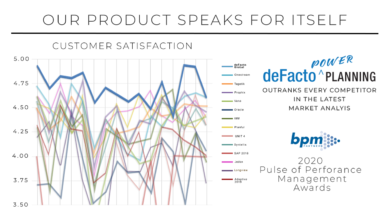A Quick Look : Case Study – Major Restaurant Chain
Our client owns and operates a chain of over 100 restaurants and delis across the mid-west and southern parts of the US. They were using a home-grown application to create and manage individual store budgets across each of their locations. Their approach to budgeting consists of a number of methods which include budgeting each store by sales increase/decrease percentages year over year, calculating COGS and Expenses as a percentage of sales, direct input and the use of a driver-based model for budgeting labor costs. As a result, their budgeting process involves a number of complex calculations. In addition, managing the budget process and the actual business operations requires the use of tools that are powerful enough for the CFO organization to handle complex calculations and analysis, while easy enough for the field management to modify their budgets and perform ongoing analysis, reporting and planning.
While their home-grown custom solution relied on native Excel and Power BI for analysis and reporting, data collection was a bigger challenge. Their custom solution used linked Excel files, Access databases, and SQL databases to collect and store data. The volume and complexity of the data and calculations proved to be too much for their system to handle. In addition, since they were using a custom-built solution, maintenance was difficult, especially since the original developer was no longer available to provide support.
Upon reviewing their options for a solution to best fit their needs, the company selected deFacto Power Planning as their ideal choice. deFacto Power Planning’s pre-built budgeting and planning capabilities, high performance design and use of 2-way read/write Excel and Power BI user interfaces were just a few of the many reasons it was selected.
Now, the CFO of their organization can easily create the first pass of their budget using deFacto Power Planning’s Excel U/I. The budget data is written back to the same SQL tabular database used by their Power BI application, and utilized by their field management team. Area Directors for each location modify the budgets sent to them, inputting their site-specific measures into Power BI templates. Final budgets are then managed at the field level using Power BI and at headquarters using Excel. Area Directors then use Power BI for analysis and reporting of the day-to-day operations of their business.
Now, our client has a single, high performance Unified Planning platform that all of their managers to use for financial budgeting, analysis planning. That same platform is also used for a range of other needs including sales planning, HR and more. And maintenance of their applications is easily handled by their internal staff.
